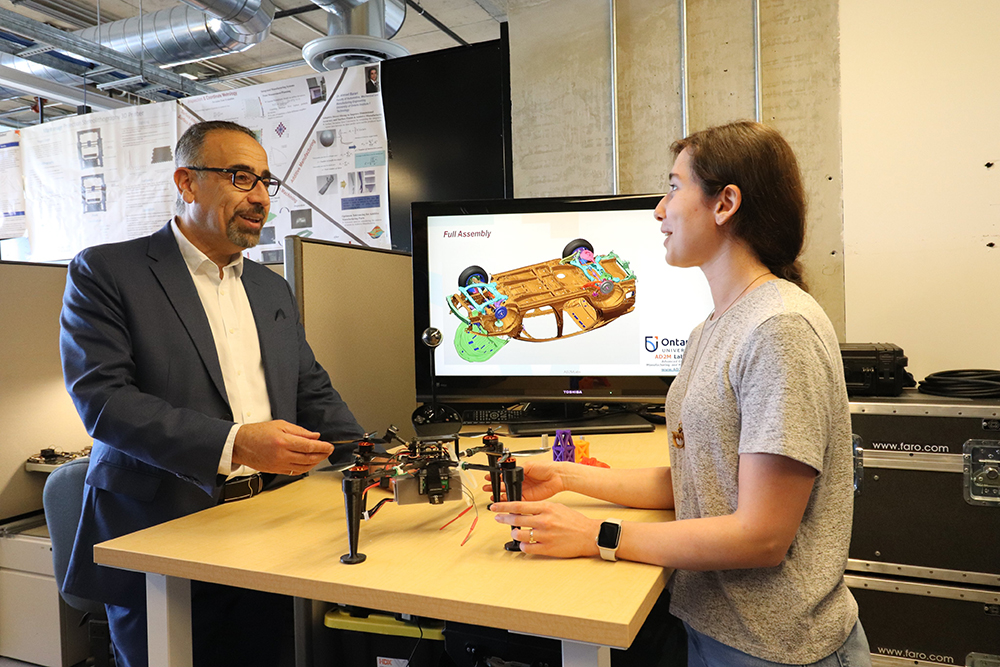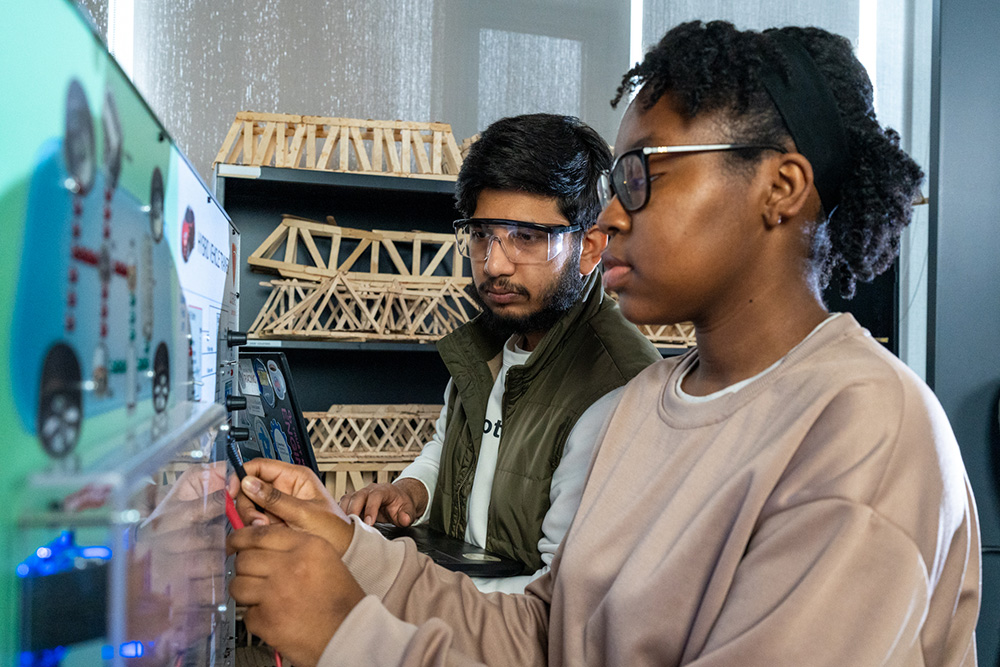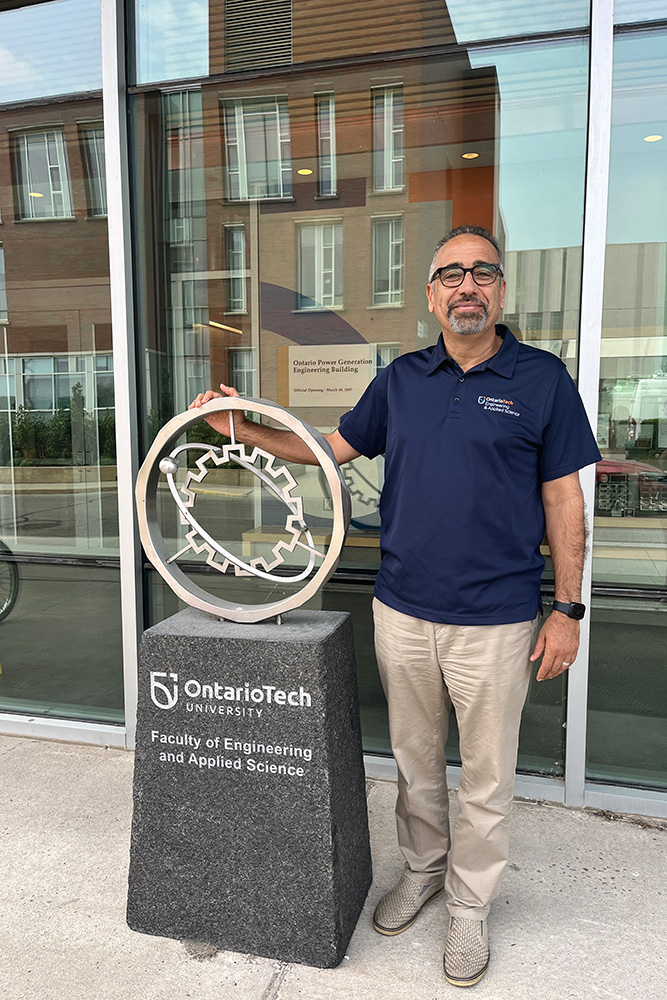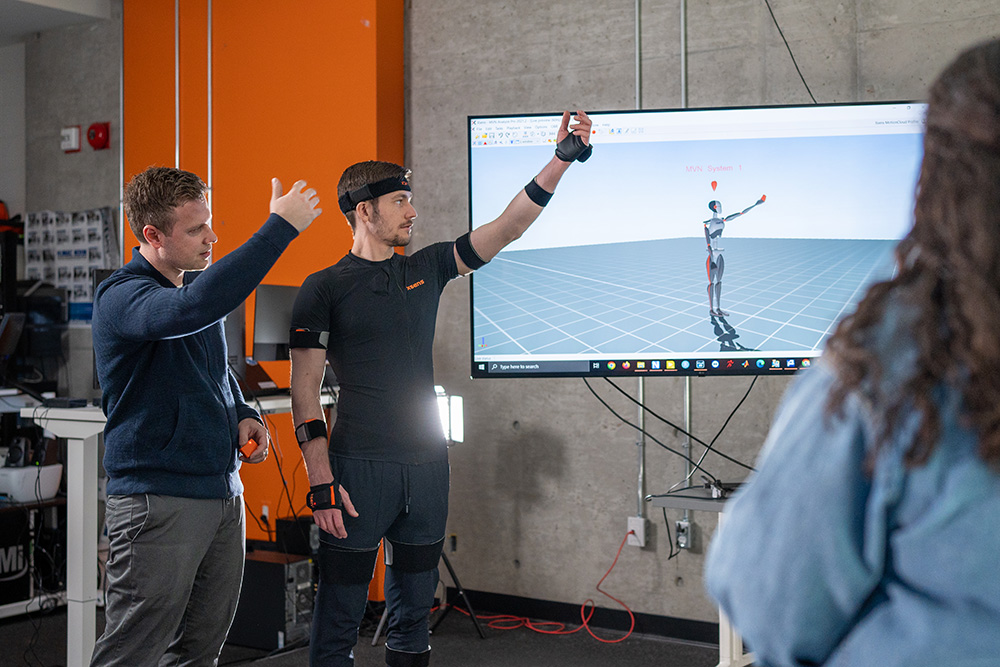From students to innovators: How Ontario Tech is shaping Canada’s automotive future
September 4, 2025

Dr. Hossam Kishawy, Dean, Faculty of Engineering and Applied Science, provides his thoughts on how engineers lead the charge in creating smarter, greener vehicles:
What kind of challenges does Canada’s automotive sector face?
The Canada-U.S. trade war has disrupted what was once a model of cross-border co-operation in car manufacturing, where parts moved freely between Canada, the U.S., and Mexico. Those days appear to be behind us.
As Canada re-envisions the car industry and boosts local parts manufacturing, engineers have a critical role to play. Engineers have helped drive innovation in the Canadian car industry before, and we can do it again.
How are Ontario Tech researchers making vehicles more sustainable?
Over the past century, cars have evolved from luxury items to everyday essentials. Early vehicles, built from cast iron, steel, and wood, have transformed through countless engineering advancements in design, safety, efficiency, performance, and comfort—such as air conditioning, GPS, and assistive-driving technologies.
Our university’s engineering experts are rethinking vehicle design by using lighter materials, advanced propulsion, and energy-efficient systems to reduce emissions, supporting Canada's transition to low-carbon transportation and helping manufacturers meet global environmental standards.
Why are engineers important to the future of Canada’s car industry, and how is Ontario Tech involved?
All disciplines of engineering are essential to modernizing Canada’s automotive sector as it adapts to climate goals, safety regulations, affordability demands, and evolving technologies. Further innovation is being fueled by globalization.
Engineers have embraced these challenges as opportunities for creativity.
At our university, students and researchers are advancing electric mobility, hydrogen-powered vehicle technologies, sustainable manufacturing, and autonomous vehicle systems—paving the way for a smarter, more environmentally efficient automotive future.
What are the job prospects for engineers in the automotive sector, and what role will Ontario Tech engineers play in tomorrow’s transportation systems?
Engineers are essential to keeping Canada competitive in the global automotive industry.
Ontario Tech contributes to this effort through Canada’s only standalone, accredited, undergraduate Automotive Engineering program. With hands-on experience and strong industry partnerships, our students design electric, autonomous, and hydrogen-powered vehicles—preparing them to lead the way in safe, efficient, and sustainable transportation for Canada’s future.
What makes Ontario Tech a hub for automotive innovation, and how is it contributing to Canada’s economic future?
According to Statistics Canada, the automotive industry remains key in manufacturing and infrastructure development, with 26.3 million registered vehicles in 2022, and motor vehicle and parts manufacturing generating a combined $109.5 million in revenue in 2023. These numbers demonstrate the sector’s lasting impact on mobility, job creation and economic growth.
Ontario Tech supports Canada’s EV economy through talent development, research, and innovation. Our ACE Core Research Facility, with one of the world’s top climatic wind tunnels, enables extreme-condition testing to help manufacturers create more resilient and sustainable vehicles.
Facilities like ACE strengthen Canada’s role in automotive innovation by attracting global manufacturers, creating high-skilled jobs and driving economic growth. This momentum is supported by broader initiatives, such as Project Arrow—the first all-Canadian zero-emission concept vehicle—developed through collaboration between leading suppliers and post-secondary institutions.
3 > 1






